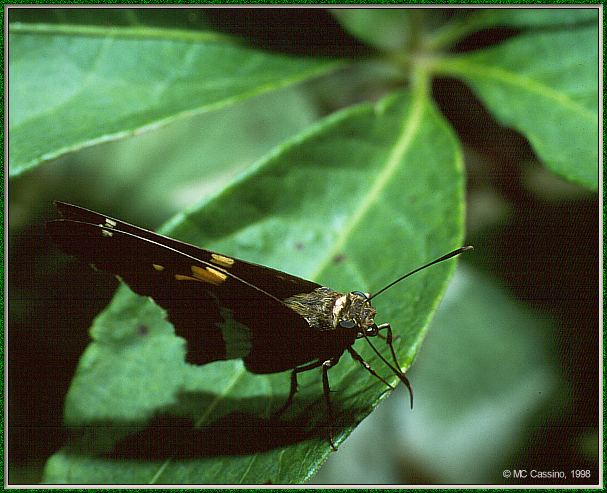|
| Query: First bird | Result: 995th of 1074 | |
September Insects Pt 1
| Subject: | September Insects Pt 1
| | Poster: | Mark Cassino (cassino@net-link.net)
| |

| File size : 56802 bytes
File date : 1998:12:01 09:00:00
Resolution: 607x493
Jpeg process : Baseline
Posted Date: Mon, 30 Nov 1998 21:36:09 -0500 |
September Insects Pt 1
First 10 of 20 insects from my site's September update.
i01 -- Honey bee
i02 -- Blow fly (was posted on usenet)
i03 -- Silver Skipper Butterfly
i04 -- Honey Bee
i05 -- Blow fly polinating spearmint flowers (was posted on usenet)
i06 -- Bumble Bee in Hollyhock flower
i07 -- Silver Skipper
i08 -- Honey Bee
i09 -- Silver Skipper
i10 -- Hornet Drinking
--
Mark Cassino
Kalamazoo, MI
cassino@net-link.net
http://www.net-link.net/~cassino
Content-Type: image/jpeg; name="i01.jpg"
Content-Type: image/jpeg; name="i02.jpg"
Content-Type: image/jpeg; name="i03.jpg"
Content-Type: image/jpeg; name="i04.jpg"
Content-Type: image/jpeg; name="i05.jpg"
Content-Type: image/jpeg; name="i06.jpg"
Content-Type: image/jpeg; name="i07.jpg"
Content-Type: image/jpeg; name="i08.jpg"
Content-Type: image/jpeg; name="i09.jpg"
Content-Type: image/jpeg; name="i10.jpg"
Comments
========
Mark Cassino kindly sent these images to me.
His website has more bird and insect images mostly
taken at his backyard.
http://www.net-link.net/~cassino
Webmaster |
^o^
Animal Pictures Archive for smart phones
^o^
|
|

